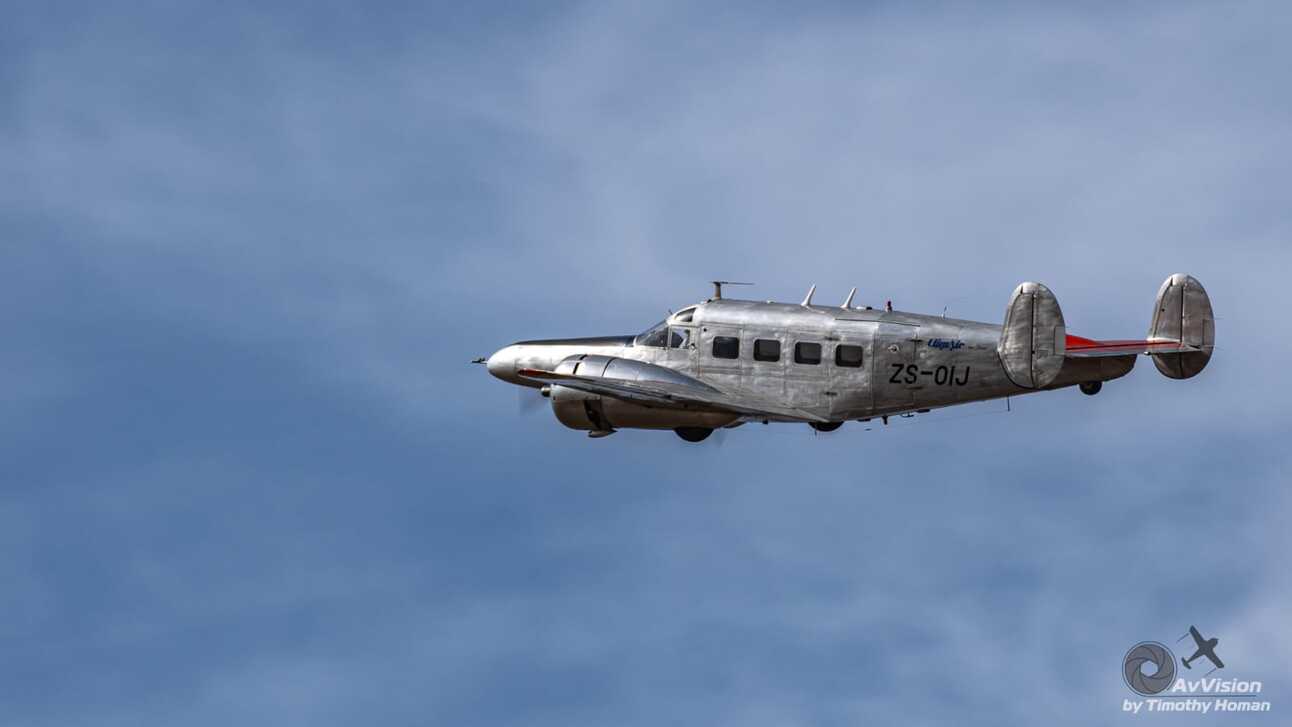- Aviation Media ✈️
- Posts
- The Beech 18 - ZS-OIJ
The Beech 18 - ZS-OIJ
A Timeless Classic in Aviation

A Brief History Lesson
The Beech 18, a name that resonates with aviation enthusiasts and history buffs alike, found its origins in the heartland of the United States, Kansas. From 1937 to 1969, over 9,000 of these versatile aircraft were manufactured, marking a production run of 32 years—a world record at the time. Although the taildragger variant is the most iconic, the Beech 18 was sold in a plethora of configurations, including nose wheel, ski-mounted, and even on floats, catering to a wide range of aviation needs.
 |  |
During World War II, the Beech 18 played numerous pivotal roles. It served as a bombardier and navigator trainer, light transport aircraft, and photo reconnaissance plane. After the war, the aircraft transitioned into the civilian world, becoming a popular choice for business travel and feeder airliner routes. But its utility didn’t stop there; the Beech 18 was also used for aerial crop spraying, firefighting, and cloud seeding, showcasing its remarkable adaptability.

ZS-OIJ: A Living Legend
One of the most cherished Beech 18s is ZS-OIJ, built in 1959 and the last airworthy example in southern Africa. Her polished aluminum exterior is not just a testament to her aesthetic appeal but also to the dedication of those who have meticulously maintained her over the years.

ZS-OIJ has had quite the storied career. In 2008, she graced the silver screen in the Hollywood production “Amelia,” a biographical film about the legendary aviator Amelia Earhart. She remains adorned in the same colors from the film, with distinctive orange leading edges and tail.

Stranded in Namibia from 2010, ZS-OIJ awaited her saviors until 2013, when Captain Flippie Vermeulen and Springbok Aviation Services came to her rescue. Restored to her former glory, she now dazzles at airshows and provides regular charters for aviation enthusiasts with Springbok Classic Air. ZS-OIJ is more than an aircraft; she is a living legend—a symbol of passion, resilience, and the timeless allure of flight.

The Nerdy Stuff
Production: 1937-1970
Number Produced: 9000+
First Flight: 15 January 1937
Crew: 2
Length: 10.44m
Wingspan: 14.53m
Engines: 2x Pratt & Whitney R-985-AN-1 Wasp Junior radial engines
Range: 1200 miles
Maximum Speed: 196 knots
Service Ceiling: 26,000 ft
The Nose Knows

One of the most frequently asked questions about the Beech 18 is why it has such an elongated nose. Contrary to popular belief, it’s not housing some sophisticated radar system—just kidding! The extended nose plays a crucial role in balancing the aircraft’s center of gravity (CG), especially when carrying heavier loads in the cabin. For instance, during scenic flights, Springbok Classic Air adds ballast weights to the nose to maintain proper CG. Additionally, when embarking on long trips or safaris, the limited cabin space for passenger bags necessitates loading them into the extended nose.

The Beech 18’s legacy is a testament to its enduring design and versatility. Whether serving in wartime or peacetime, for business or pleasure, this aircraft has etched its name into the annals of aviation history. And with legends like ZS-OIJ still gracing the skies, the Beech 18’s story continues to inspire and captivate aviation enthusiasts around the world.








Reply